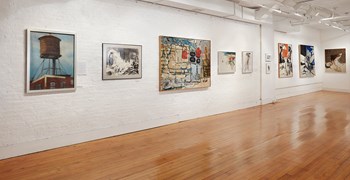The Frescoes of Piero della Francesca: Their Meaning for People’s Lives Now
In honor of the Piero della Francesca 600th anniversary celebration, the Terrain Gallery is proud to present this important talk given in 2007 at the Piero della Francesca Foundation in San Sepolcro, Italy.
Lia Navarra Baldesi, president of the Foundation, said after hearing the talk:
“You have brought something new from America! I have seen something new….I always appreciated art as beauty, as the pleasure of beauty; now, through what you tell me of Aesthetic Realism, I know that through Eli Siegel’s philosophy of opposites I will see art as having an ethical meaning, as having an effect on people’s lives!
I. The Queen of Sheba Adoring the Holy Wood
from The Legend of the True Cross, Basilica of San Francesco, Arezzo
As I speak today about two of the magnificent works of Piero della Francesca, the principle at the basis of all I say is the following statement by Eli Siegel: “All beauty is a making one of opposites, and the making one of opposites is what we are going after in ourselves.” I am proud to say that I’ve seen this principle as true about every instance of art, true about the artist’s intention, and true about the effect of a work of art on ourselves. It enables us to more deeply understand the meaning of Piero’s art, including for our lives today.
Let us look now at the panel depicting the Queen of Sheba Adoring the Holy Wood. I shall discuss the left side of this large panel in which we see the journey of the Queen as she travels to speak to King Solomon.
The legend is about how the noble Queen, coming from the south with her entourage, is about to cross a bridge, when, in a vision, she is told that this is the very wood destined to be used to construct the cross. Hearing this, she kneels in veneration of this sacred wood—and this is the moment Piero painted.
What is the large meaning of this work? I see every detail of it to be centrally about two opposites: high and low, or pride and humility—opposites crucial in every person’s life. The critic Kenneth Clark wrote of Piero’s “search for contraries.” Meanwhile, it is Aesthetic Realism which, for the first time, shows that the contraries the artist searches for and presents are those every person is hoping to make sense of. And questions that arise are: What does it mean to be truly proud as we go through the moments of our days? What is the difference between the false pride of arrogance, and authentic pride? In Eli Siegel’s essay “Art as, Yes, Humility,” he writes:
Humility is the willingness to see things other than oneself as having meaning for oneself. This humility makes for pride, for pride, in the long run, comes from the comprehensive and accurate way one is affected by reality, the universe that is under one’s nose and far away. Art, itself, is humility at one with pride.
Like most people, I once saw pride in a very different way....Read more












